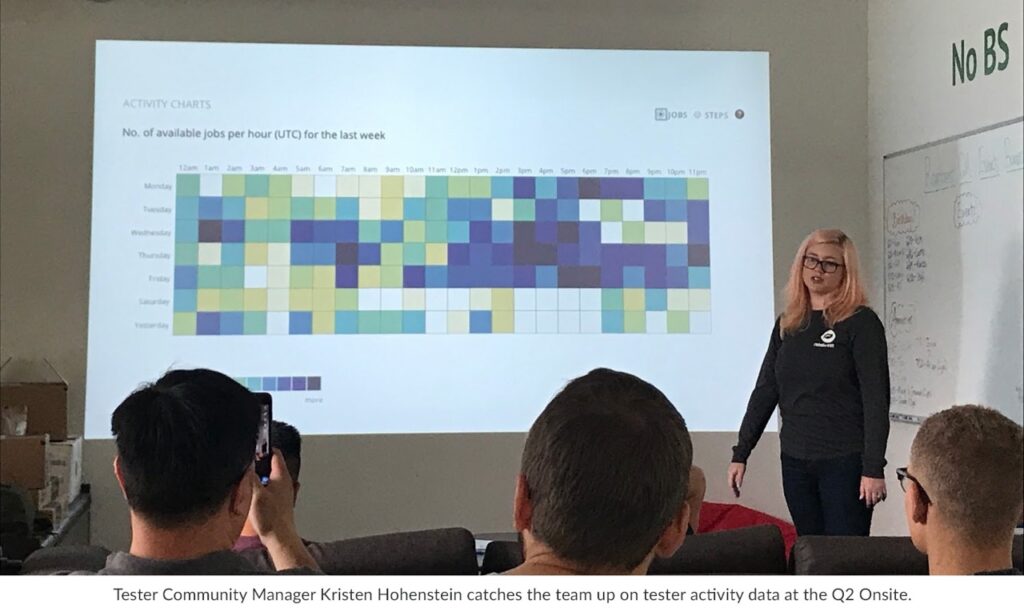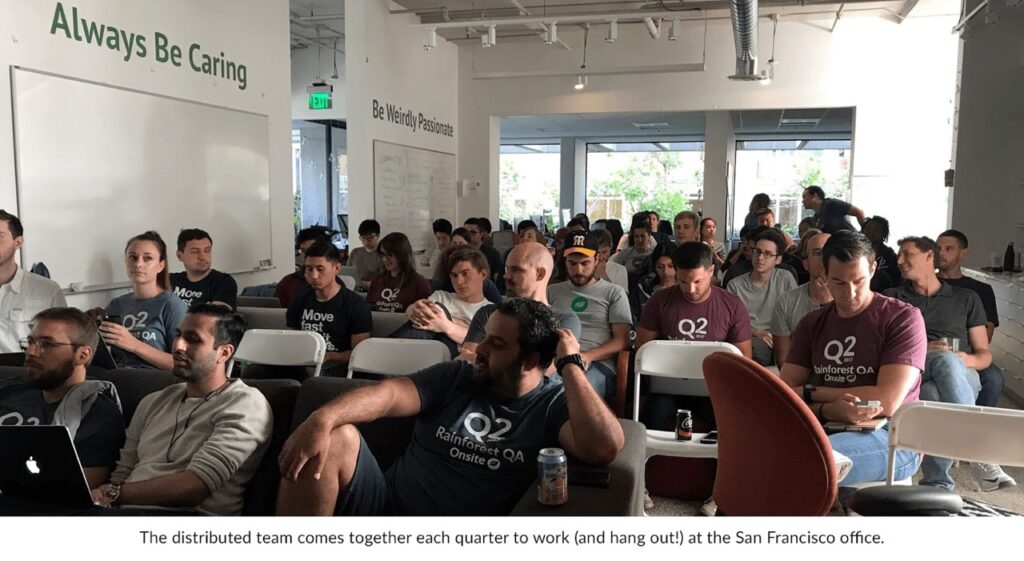While there are many benefits to having a distributed team, managing a distributed team does not come without challenges. One of the key criteria to building a successful distributed team is the ability to motivate the team.
This can be extra challenging when most, if not all, of your team members are remote. The subtle cues that let a manager know that an employee is struggling, bored or unengaged are harder to see when you only have the opportunity to talk to your team on the phone or video-call. You have fewer opportunities to get to know your team well and discover what is important to them.
In managing a mostly-distributed engineering team at Rainforest, I’ve noticed that there are several critically important components to keeping a distributed team motivated. Taking these steps can help ensure that your distributed team reaches its full potential.
Foster a remote-first culture
First and foremost, a distributed team works best under a culture where remote employees are valued and are treated the same as in-office employees. This is a big commitment; this means that remote employees participate in company meetings, conferences and activities the same way that an in-office employee does, to the greatest extent possible.

Communication is key when the team is distributed. To facilitate effective communications, there needs to be structure, tools and rules set up so that communication is frequent and concise, but not overly disruptive. Special attention must be paid in how communication is done because miscommunication can happen easily and it can damage relationships — sometimes without the involved individuals knowing it.
For example, in a company meeting, in-office employees typically has a better experience because it’s easier for them to engage in the dialogue. To offer a similar experience to distributed team members, you may want to consider holding the meeting over a video-conferencing setup — even for the in-office participants — so that it is easier for remote employees to participate in the meeting.

Since remote employees are not at the office most of the time, it is important that they get frequent and concise updates on company directions and decisions so that they are as engaged in the company’s success as an in-office employee. Similarly, there needs to be communication channels for remote employees to share their feedback on company decisions to the leadership team so that they know they have a voice at the table.
Documentation is key for any team, but even more important for teams that are distributed. Creating a good discipline in documentation makes life easier and work a lot more efficient for distributed teams.
Establish a path for career growth
A common goal for many people is to move up in their career track, especially into management positions. Traditionally, it is harder for a remote employee to move up to key management positions because that person is not in the office and therefore has less opportunity to interact with the executive team.
To motivate remote employees who are interested in advancing their career in the company, there needs to be a structure that allows a remote manager to be effective in managing teams consisting of remote employees, in-office employees or a combination thereof. Having remote employees in key leadership positions also assures the distributed team that the company is truly supportive of such structure, and that their career opportunities are just as good as an in-office employee. Leaders who are remote understand the needs of their remote team members best so they’re better able to create an environment that are best suited for a distributed team.
Keep day-to-day tasks engaging
In addition to considering the long-term goals of remote workers, managers must also work to ensure that their employees find their work fulfilling. Everyone loves interesting work, and remote employees are no exception. Assigning tasks that fit each employee’s skills and interests helps keep them engaged regardless of where they are.
Since face-to-face social interaction is limited, managers of remote employees need to pay special attention to their professional needs and interests, and take these into consideration when assigning work. Managers need to leverage every opportunity to observe what their remote employees are interested in, and to constantly adjust their assignment so that every member of the distributed team feels challenged and satisfied.
Bring the distributed team together
Lastly, an opportunity for the distributed team to get together physically once in a while is important. Coming together allows people to put a face to the name of their coworkers. When the team gets together, it is important to strike the right balance between social and work activities so that the team gets to mingle and build relationship while getting things done professionally.

Managed properly, distributed teams can be a huge asset for the company. However, the success of a distributed team should not be taken for granted, and requires careful consideration of the many factors discussed here and the commitment to make this team successful long term.
